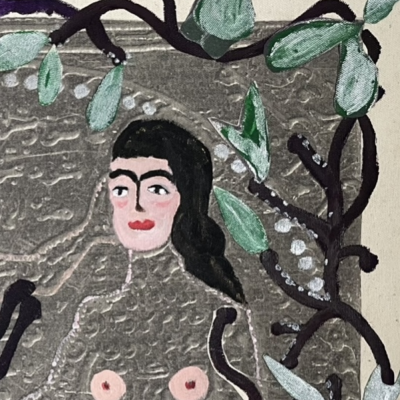King Protea & The Paramour I,
In light of the global escalation of racial discrimination against non-citizens and people of colour during the COVID-19 pandemic, the artist began pondering the relevance of revisiting the history of science and racism. During her initial exploration, she stumbled upon two poignant narratives: the story of Ota Benga and that of Saartjie Baartman, both emblematic of humanity’s cruelty. These encounters spurred the artist to delve deeper into the subjects of race and slavery. Through this project, Najd aspires to shed light on a topic often shrouded in silence, aiming to illuminate the global history of racial slavery, particularly the plight of people of colour, within their artwork.
In her work, Najd oscillates between figurative and abstract styles, and often borders on Surrealism; she explores a variety of themes to do with immigration, freedom and womanhood. In this particular piece, executed in acrylic on canvas, the subject is adorned with a vibrant floral headpiece formed of South Africa’s national flower the King Protea, juxtaposed against block colours which frame the figure, enhancing the painting’s focal point.

























